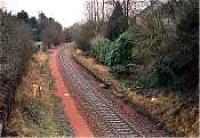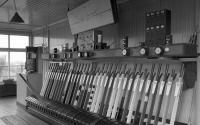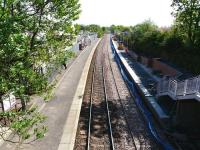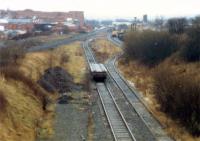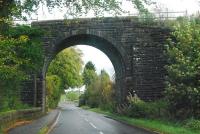Glasgow and Kilmarnock Joint Railway
Introduction
This line is open. This was a joint line owned by the Caledonian Railway and Glasgow and South Western Railway. The line was joint as the Caledonian wanted to extend its Glasgow, Barrhead and Neilston Direct Railway to Kilmarnock and the South Western wanted to build a more direct line from Kilmarnock to Glasgow. The Glasgow, Barrhead and Neilston Direct Railway was taken into joint ownership and along with the Glasgow and Kilmarnrock Joint Railway it became the Glasgow, Barrhead and Kilmarnock Joint Railway, GB & K Jnt or GBK. The line included a branch to Beith from Lugton, now cut back to RNAD Beith (at Giffen). This branch is now in abeyance. The line has been singled between Barrhead and Kilmarnock except for a passing loop at the closed Lugton station. However, Network Rail opened a 'dynamic loop' between Lugton and Stewarton (south of the station at Lochridge Junction) to increase capacity and allow trains every half hour.
Dates
Portions of line and locations
This line is divided into a number of portions.
Crofthead to Kilmarnock
Passenger and goods line from Crofthead/Neilston to Kilmarnock.
This was a terminus. When initially opened the line from Barrhead was single track. The line terminated with a loop and two sets of goods sidings. There was a shed, Neilston Shed.
...
See also
Glasgow, Barrhead and Neilston Direct Railway
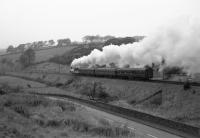
Robin McGregor 17/10/1965
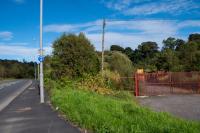
Ewan Crawford 14/09/2017
This was a two platform station close to the Crofthead Mill. It was inconvenient for the Neilston village being at the foot of a hill and quite far north of it. The surviving Neilston station serves the village better.
...
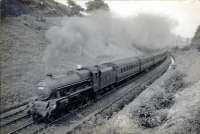
G H Robin collection by courtesy of the Mitchell Library, Glasgow //1941
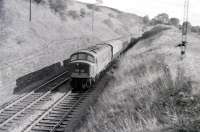
Colin Miller /03/1966
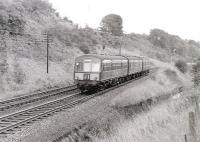
Colin Miller //1966
There was a signal box at this location. The box was on the south side of the line and east of the Shilford overbridge. Up and down sidings were planned but not laid in, however a crossover was installed.
...

Ewan Crawford 17/08/2017

G H Robin collection by courtesy of the Mitchell Library, Glasgow //1941

G H Robin collection by courtesy of the Mitchell Library, Glasgow //1941

G H Robin collection by courtesy of the Mitchell Library, Glasgow 30/03/1962
This was a two platform station with the main building on the Glasgow bound platform.
...
A box 'Dixon's Pit No 2' opened here with the line in 1871. Sidings were on the west side of the line, approached from the north and making a trailing connection. There was a signal box (west side).
...
Lugton L&A Junction opened in 1903 between the 1871 Glasgow and Kilmarnock Joint Railway, (jointly owned by the Caledonian Railway and Glasgow and South Western Railway), and the extension of the Lanarkshire and Ayrshire Railway opened in 1903 between Giffen Junction and Cathcart West Junction. The L&A junction opened as part of a short link joining the new line at [[Lugton ...
More detailsSee also
Lanarkshire and Ayrshire Railway
This was a two platform station with the main station building on the Glasgow bound platform.
...
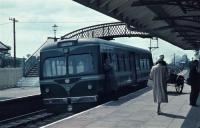
Brian Haslehust //1962
This junction was directly south west of Lugton station. It was formed between the Glasgow - Barrhead - Kilmarnock line and the branch to Beith Town. The junction was taken out before 2009 when the 'Dynamic Loop' was opened from Lugton through Dunlop and Stewarton to its south end at Lochridge Junction.
...
This is a two platform station. There is a small car park on the east side.
...

David Panton 21/02/2019
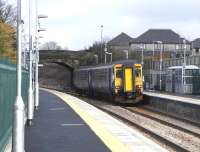
David Panton 17/03/2010
This is a two platform station. The line was redoubled in 2009. The northbound platform was reinstated. There is a car park at this station.
...
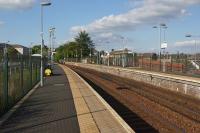
John McIntyre 31/08/2018
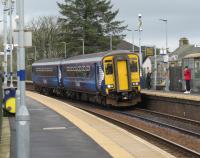
David Panton 21/02/2019
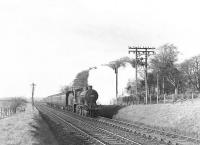
G H Robin collection by courtesy of the Mitchell Library, Glasgow 06/05/1954

John Steven 14/07/2009
This is a double track masonry viaduct of ten arches crossing the Annick Water. The viaduct is south of Stewarton station. It is 555 ft long. Officially Stewarton Viaduct, also known as Annick Water Viaduct.
...

John Furnevel 17/06/2007
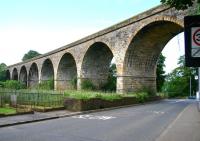
John Furnevel 17/06/2007
This is not a junction in the traditional sense, it is the south end of a loop from Lugton in the north.
...

Ken Browne 28/08/2016

Ken Browne 28/08/2016

Ewan Crawford /01/2008

Ewan Crawford 26/09/2009
This is a minimal modern single platform station opend in 1984. The platform is on the west side of the single track line. There is a small station car park.
...
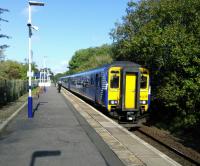
David Panton 19/09/2017

Ken Browne 08/02/2012

Ken Browne 03/06/2011
This was the junction between access from the joint line to the north of Kilmarnock to the joint goods station (located to the north of Kilmarnock station) and the connection to Kilmarnock station at Kilmarnock Junction.
...
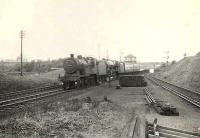
G H Robin collection by courtesy of the Mitchell Library, Glasgow 06/05/1954
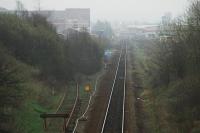
Ewan Crawford //2005

Robert Blane 08/10/2009
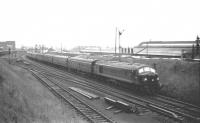
Bill Hamilton /06/1961
In 1843 the Glasgow, Paisley, Kilmarnock and Ayr Railway opened to Kilmarnock [1st]. This location is where the passenger station (Kilmarnock [1st], to the north) and goods lines (Kilmarnock Goods, to the south) parted.
...
See also
Glasgow, Paisley, Kilmarnock and Ayr Railway
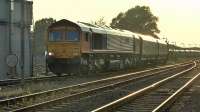
Ken Browne 06/06/2016
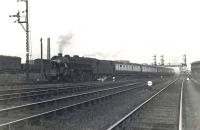
G H Robin collection by courtesy of the Mitchell Library, Glasgow 02/06/1954
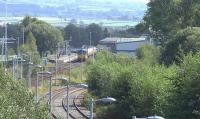
Ken Browne 31/08/2016
Beith Branch
From Lugton Junction to Beith Town.
This junction was directly south west of Lugton station. It was formed between the Glasgow - Barrhead - Kilmarnock line and the branch to Beith Town. The junction was taken out before 2009 when the 'Dynamic Loop' was opened from Lugton through Dunlop and Stewarton to its south end at Lochridge Junction.
...
Sidings serving Dixon's quarries at Waterland were controlled by 'Waterlands Siding' signal box. The sidings were located close to Lugton Junction on the Beith Town branch.
...
The Lanarkshire and Ayrshire Railway line, opened 1888, started from here from the Beith Town branch of the Glasgow and Kilmarnock Joint Railway of 1873 and ran south west to Ardrossan Montgomerie Pier. The junction was immediately east of Barrmill station.
...
See also
Lanarkshire and Ayrshire Railway
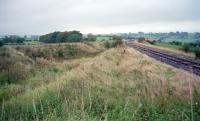
Ewan Crawford //1996
This was a single platform station opened on the jointly owned Glasgow and Kilmarnock Joint Railway branch from Lugton Junction to Beith. This was built as a single track branch although many structures were built to accommodate a second track.
...

Ewan Crawford //1996
To the south of the Beith Town terminus, at its throat and on the west side of the line, was a locomotive shed which was approached via reversing spur and a turntable.
...
This was a single platform terminus. There was a large goods yard on the east side of the site. To the south, on the west side, was a locomotive shed which was approached via reversing spur and a turntable (Beth Town Shed). The terminus was approached from the south east.
...
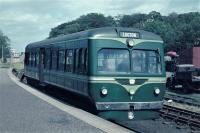
Brian Haslehust //1962

Ewan Crawford //1997

Colin Miller 18/07/1962
Kilmarnock Joint Goods
A short branch serving the joint goods north of the station.
This was the junction between access from the joint line to the north of Kilmarnock to the joint goods station (located to the north of Kilmarnock station) and the connection to Kilmarnock station at Kilmarnock Junction.
...

G H Robin collection by courtesy of the Mitchell Library, Glasgow 06/05/1954

Ewan Crawford //2005

Robert Blane 08/10/2009

Bill Hamilton /06/1961
This two road stone built shed was in the north part of the Kilmarnock Joint Goods yard. A turntable was to the west and lines approached from the west, from Kilmarnock Goods Junction. As the Glasgow and South Western Railway had its own sheds nearby the main user was the other partner in the joint line, the Caledonian Railway.
...
The bottling plant of Johnnie Walker in Kilmarnock, just north of Kilmarnock station, was rail served. It was previously the site of Kilmarnock Joint Goods (Kilmarnock Hill Street Goods).
...
This goods yard was opened by the Glasgow and Kilmarnock Joint Railway (GBKJ) as Kilmarnock Hill Street Goods. Access was from Kilmarnock Goods Junction from the Glasgow direction, the line entering the yard as a double track.The site was north of Elmslie Woolen Mills and Kilmarnock station with road access from Hill Street. There was a large goods shed with sidings to the north ...
More details









